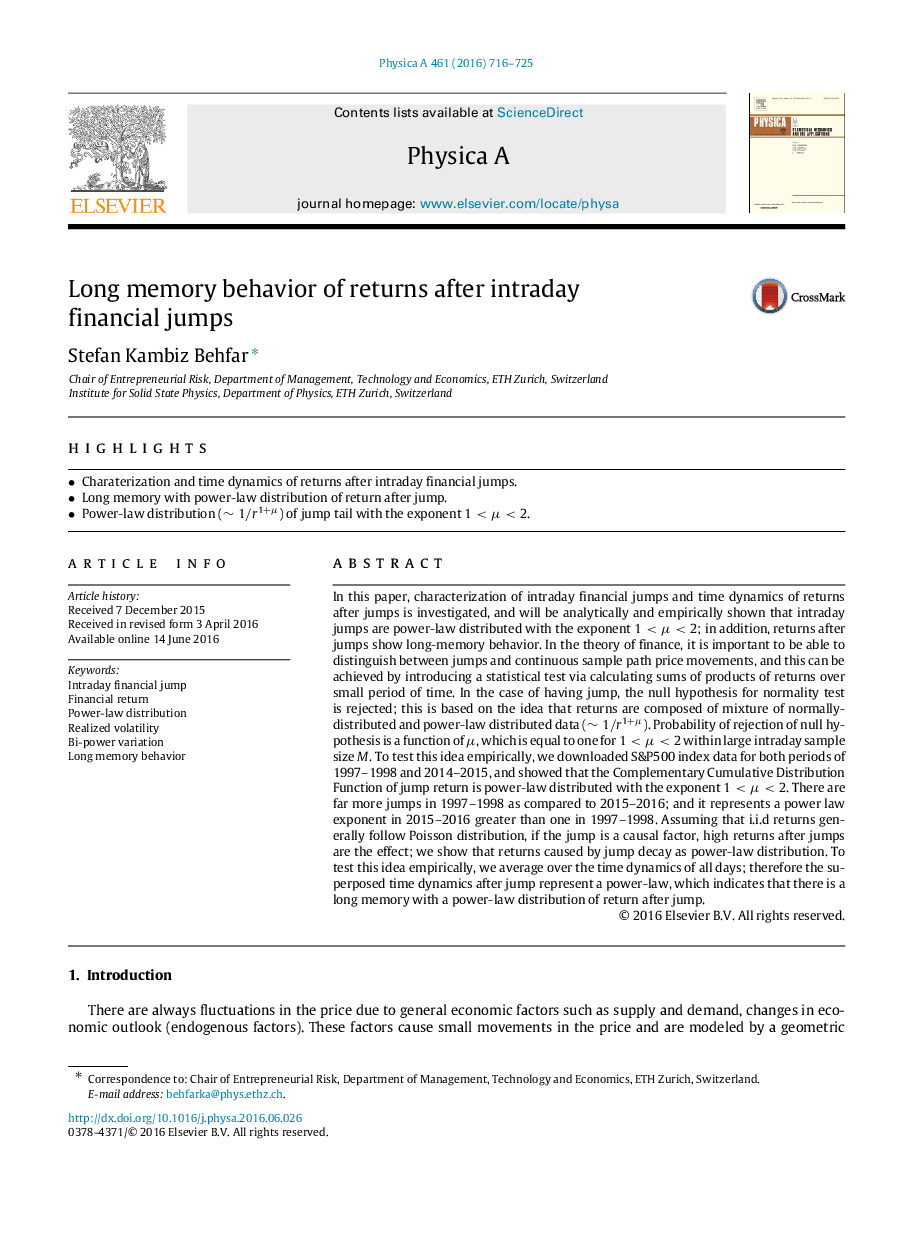| Article ID | Journal | Published Year | Pages | File Type |
|---|---|---|---|---|
| 7377067 | Physica A: Statistical Mechanics and its Applications | 2016 | 10 Pages |
Abstract
In this paper, characterization of intraday financial jumps and time dynamics of returns after jumps is investigated, and will be analytically and empirically shown that intraday jumps are power-law distributed with the exponent 1<μ<2; in addition, returns after jumps show long-memory behavior. In the theory of finance, it is important to be able to distinguish between jumps and continuous sample path price movements, and this can be achieved by introducing a statistical test via calculating sums of products of returns over small period of time. In the case of having jump, the null hypothesis for normality test is rejected; this is based on the idea that returns are composed of mixture of normally-distributed and power-law distributed data (â¼1/r1+μ). Probability of rejection of null hypothesis is a function of μ, which is equal to one for 1<μ<2 within large intraday sample size M. To test this idea empirically, we downloaded S&P500 index data for both periods of 1997-1998 and 2014-2015, and showed that the Complementary Cumulative Distribution Function of jump return is power-law distributed with the exponent 1<μ<2. There are far more jumps in 1997-1998 as compared to 2015-2016; and it represents a power law exponent in 2015-2016 greater than one in 1997-1998. Assuming that i.i.d returns generally follow Poisson distribution, if the jump is a causal factor, high returns after jumps are the effect; we show that returns caused by jump decay as power-law distribution. To test this idea empirically, we average over the time dynamics of all days; therefore the superposed time dynamics after jump represent a power-law, which indicates that there is a long memory with a power-law distribution of return after jump.
Related Topics
Physical Sciences and Engineering
Mathematics
Mathematical Physics
Authors
Stefan Kambiz Behfar,
